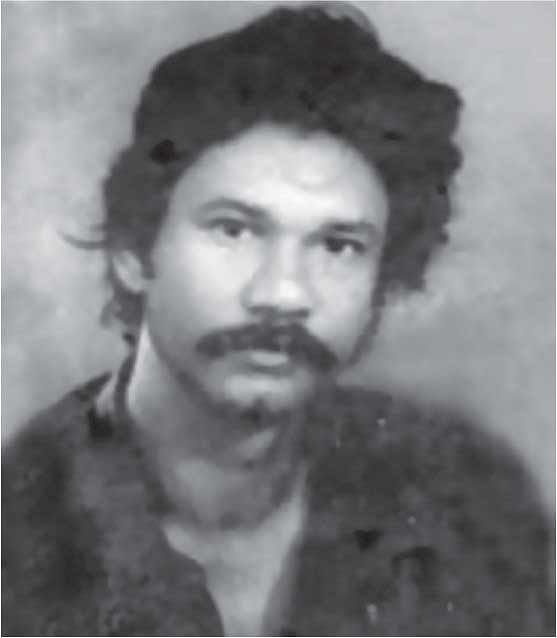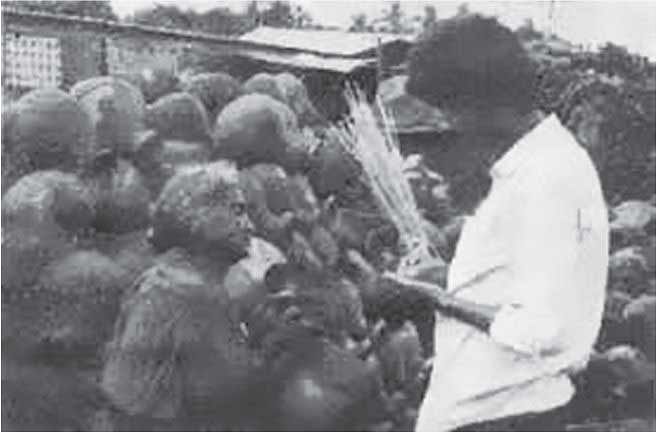The Minstrel Journalist
The Minstrel Journalist
A dedicated investigative journalist, Monajatuddin's relentless search for the facts brought about changes in people's lives

The works of Monajatuddin have had more of a shaping role in contemporary Bangladesh than that of many a development-pundits, editors and litterateurs. Take for example, the Child Marriage Restraint Act 2014, only recently okayed by the cabinet. It was Monajatuddin's keen, investigative reporting on child marriage that informed and laid the groundwork for necessary social-debates and policy-making. His coverage of ravaging floods prompted food relief. His reporting on famine in the North sent (then) President Ershad scurrying to Rangpur. His articles on the plight of farmers encouraged other outlets to pick up the story. Monajat swayed the Agenda. He was an unstoppable symbol of curiosity, empathy, industry and activism. Yet, when finally invited to cover a state visit, he was left stranded without a suit: the dress code for a formal presidential entourage.
Monajatuddin was born in 1949 in Rangpur. He lost his father at 14 and was forced to assume responsibility for the family. He quit his bachelors and started working: resorting to any paying job, from a bookbinder to a street peddler; a librarian to a school-teacher. Only later, would he discover his true passion: Journalism – and end up dedicating his life to the thankless, unenviable work with the downtrodden, forgotten people of Bangladesh.
His career started with the Bogra Bulletin in the 1960s. After an attempt to publish a Rangpur-centric tabloid fizzled out, Monajatuddin worked with Dainik Purbadesh, Dainik Azad before joining the Dainik Sangbad, where he would serve for almost 20 years as a regional correspondent. It was here that he would begin to realise that much of national coverage featured personalities, events, rallies, seminars and most of all, political posturing. The masses were left unrepresented and voiceless. Someone had to tell their stories. But before they could be told, the stories had to be unearthed.
It was at this time that Monajat began developing his unique, grassroots technique of investigation. In what he dubbed 'situation reporting' – Monajat would take up lodging with a village farmer or a fisherman and start walking around the fields, grazing grounds and canals – making friends with locals. He would talk to them – listening to their stories of hardship, hunger and the almost-medieval yoke of debt. On the other end, he would recruit and train about a dozen youth activists to collect demographic data. Combining the most compelling of stories and hard data, he managed to convey the most remarkable, moving and holistic accounts of rural Bangladesh. The Ashoka Institute called his technique 'journalistic blitzkrieg'. A key feature that emerged was one of 'follow up' pieces. In Begum Rokeya Sakhawat's birthplace, Pairaband village, he returns after a decade to examine qualitative changes in standard of living, income sources, marital statistics and other social indicators. There are a number of books by Monajat that narrate his journalistic methods. Written during harsh times, his stories are heavy with starving people, floods, famines and weak infrastructure.
Back then, the fastest way to communicate with the head-office was to book a call to Dhaka and wait in queue for a chance. For over a decade, Monajat would hit the bus-stop at the crack of dawn and chat up a waiting passenger. Having established a congenial relationship, he would urge the passenger to deliver his 'packets' of articles and photographs. He did this with an astounding 1500 'packets'. They were almost always delivered and his stories, printed in the following days.

Week after week, Monajat presented for the nation's consideration, his evidence and his emotional narratives from the heart of Bengal. Without a measure of doubt, these reports considerably shaped public policy making. As mentioned before, he wrote extensively about the very real phenomenon of Child Marriage at a time when no one else was bothering to. One such story is about Shialu Chacha (60) and his tenth wife, Anjera. Halfway into his on-scene investigation, Monajat realised he had jumped to a conclusion without having listened properly. Having survived two failed, abusive marriages – the first of which was at nine years of age – Anjera was raped by an influential thug. Neither the police nor the courts came to the aid of Anjera's day-labourer father. On the contrary, Anjera was painted as an immoral succubus who traded sexual favours for money. Faced with constant threats from the rapist, exile or suicide seemed her only two options. It was then that Shialu Chacha sent his marriage proposal, presenting Anjera with the social status and protection afforded to wives. Monajatuddin was a vocal opponent of polygamy and child marriage. But when Shialu Chacha asks what would've become of the girl if he hadn't married her, Monajatuddin is forced to admit that it was the right thing to do.
In 1991, Monajatuddin was elected to the Ashoka Fellowship – a network of leading social entrepreneurs with innovative solutions to social problems. That same year, he broke the story of three trunks of transcripts and documents from the Swadhin Bangla Betar Kendra. Colleagues agree that Monajat's meticulous research and investigative acumen had led him to this historic treasure-trove. Though destined for the National Museum, these documents mysteriously vanished in transit and remain missing till this day.
Monajatuddin met a tragic end in 1995 when he accidentally fell into the water from a ferry, while investigating two boat capsizing events. His 19th death anniversary will be duly observed on December 29, before his work and its implications are forgotten all over again. For his significant contribution to community-based investigative techniques, Monajat was posthumously awarded the country's greatest civilian honor, The Ekushey Padak. For his seminal work in bridging the rural-urban divide, he received the popular title of 'The Minstrel Journalist' (Charon Shangbadik).
***
Monajat was his stories; he was a chronicler of Human history, as it happened. His stories from the roots are not dispassionate - rather they are steeped in deep empathy... as though their writer had emerged from those very rural communities. Monajat was on 'their' side...the poor's. He told stories that city-folk didn't care to know and the Government would rather have sidelined. He wasn't the aristocracy's spy surveying the temperament of the masses, but the latter's outspoken messenger: one who had mastered our tongue.
Monajatuddin has shown Bangladeshis an objective, researched and evidence-based depiction of rural Bengal, without discarding the range of emotions that came with the attachment to it. Our modern obsession over numerical metrics to plot deprivation and chart inequality - must be balanced by passionate observation, analyses and chronicling of the lives of our rural masses. Today, 80% of Bangladesh has been relegated to the highly neglected 'local news' pages. Perhaps in revisiting the works of Monajatuddin, we will be reminded that our deliverance will come, not by closing our eyes to our poor, but by truly including them in policy considerations and the Development Agenda. Thus there's hope that Monajat is the kind of idol who can make the tender, young minds of the country want to go out there and resume reporting real News.
I think, in the end, Monajatuddin managed to take Journalism to its rightful, aspirational height. To risk hyperbolizing, people like him balance out the evils of cookie-cutter journalists – out with their iPhones to lap up, and lament, some glorifiable, photogenic misery. Monajat would run out to areas with flooding or erosion – not to take a shot at the front page, but to be a true bridge between communities and governments. He loved these people and their stories were truly important to him. Reminiscing the modern minstrel, one journalist wrote that he had never asked where Monajat's real familywas; he had always felt was as though Monajat belonged to all of Bangladesh, to all her people.
In our current, turbulent times of ubiquitous and instantaneous information, Monajatdddin, and his legacy, assumes larger than life proportions. Media and Journalism have reached new lows. Corporatization, over-reliance on advertising, talking heads & 'experts', unverified videos, tragedy logos, hottest newscaster rankings, contrived onscreen-quarrels and glamour have all eaten away at the integrity of news media. And this is precisely when Monajatuddin begins to emerge as a category; an idea. A standard. A virtue. A philosophy of News. An ethereal ambition.
This article was previously published on alalodulal.org